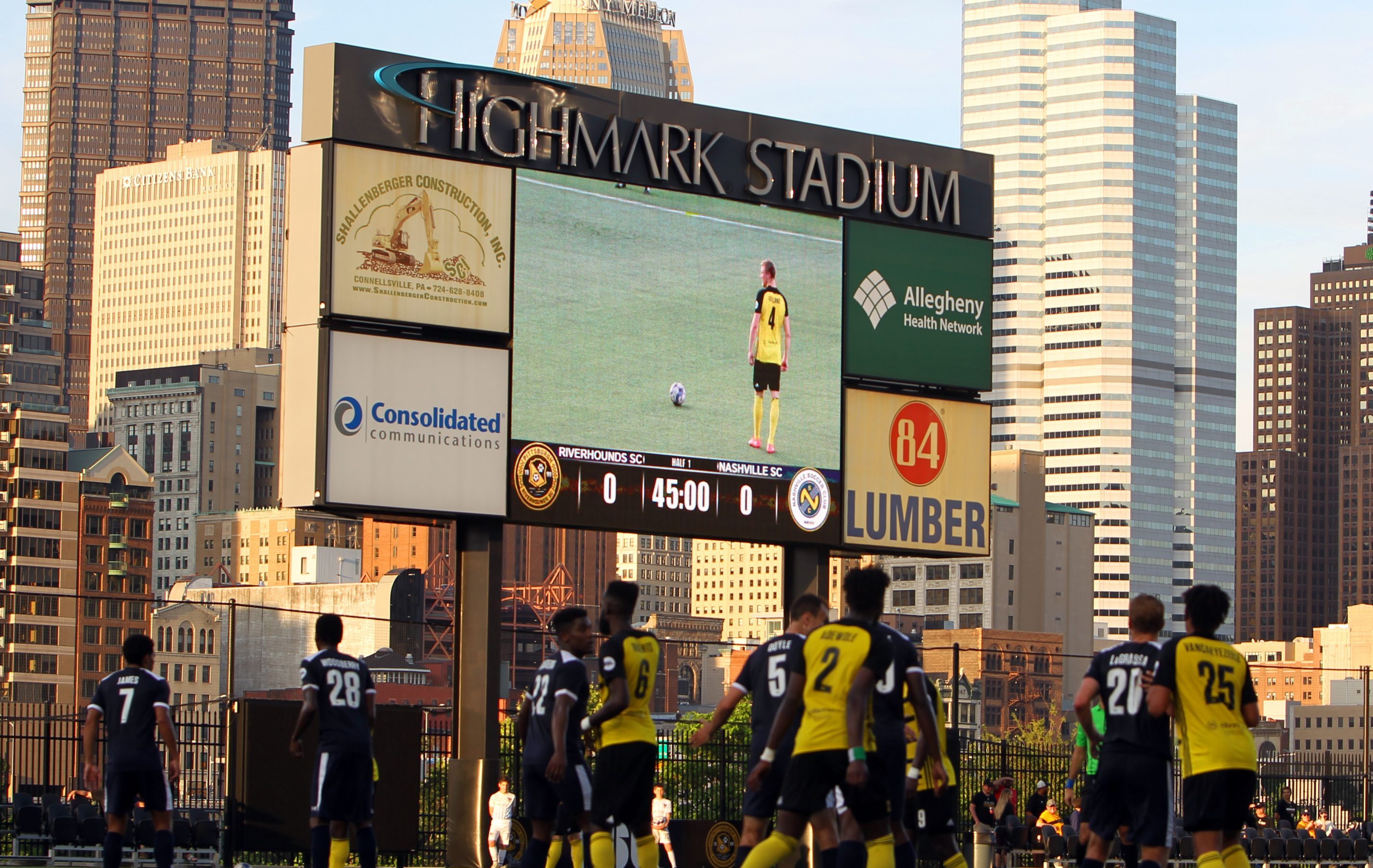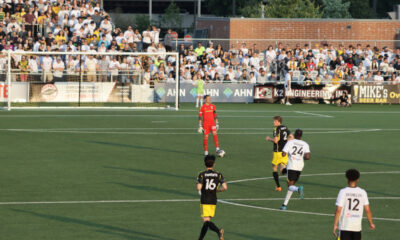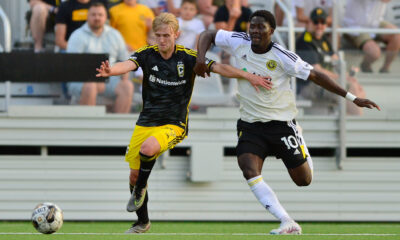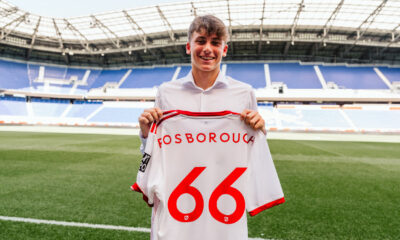
From the perspective of someone who was born in the 1990’s, Soccer was the sport that everyone played growing up.
Boys and Girls, Men and Women, it was one of the sports that all of your friends could play together in the backyard, at a park, at a family reunion, during a block party, on an organized recreation or travel team.
Soccer (or football internationally) has always been the World’s most popular sport because literally all you need is a ball, net and a group of people to play. We see this every four years with the World Cup when it is the World’s most popular sport because of national pride and a chance for different cultures to learn about each other.
But, with the exception of when the World Cup rolls around on both the Men’s and Women’s sides, that mainstream popularity is lacking here in the United States of America.
Why is that?
Especially here in Southwestern Pennsylvania, youth and high school soccer is still pretty popular during the fall even in a region where high school football reigns. Attendance at both the WPIAL and PIAA State Championships does pretty well, but then it seems to drop off for the levels of soccer after high school, both collegiate and professional.
Was that because collegiate soccer in the area, Pitt, Duquesne, Robert Morris and down the road in West Virginia, was not really competitive with other schools in their conferences and across the nation for some time?
Things have started to change in the past few years at both Pitt and Duquesne as they have been putting more effort into putting quality teams on the field. Pitt has hired two well respected coaches who’ve built national championship caliber programs in previous stints at Wake Forest and Notre Dame respectively, with Jay Vidovich (Men) and Randy Waldrum (Women).
Both Pitt and Duquesne have started to put some money into their soccer facilities, so Pitt is up to par with the intense competition in the ACC, which has been the clear-cut top NCAA Division I conference in both men’s and women’s soccer year-in and year-out. Duquesne women have been posting winning teams since head coach Al Alvine arrived on campus, including an Atlantic 10 title in 2016. West Virginia and Penn State are the women’s programs that aren’t that far, and have set the standard very high. Both are annually National Contenders, with Penn State winning the National Championship in 2015, and West Virginia making it to the final in 2016. Both have played before large crowds on its campuses, not too far away.
Could the start of a rise in collegiate soccer in the area help bridge the gap between high school soccer and the only professional team in the area, the Pittsburgh Riverhounds SC?
We will tackle that in a lot more detail in my next article in the “Growth Of Soccer” series, when we take a look at local colleges and high school soccer.
But first, let’s go right to the highest level of soccer in our area.
The Riverhounds SC are celebrating its 20th season in 2019 and that is an accomplishment in of itself that they’ve remained one of only three clubs that have stuck around at the second and third tier of professional soccer for this long. Franchises in Rochester, Harrisburg, Hershey, Wilmington and Dayton just to name a few, no longer exist or are not operating a competitive pro team at the present time.
Fast forward to the current era, and the Hounds had been mired with attendance numbers that has plateaued from the opening of Highmark Stadium in 2013, when they averaged 3,273 fans in its inaugural season, through 2018.
After the hiring of Bob Lilley led to a turn-around season in 2018, and continuing through this season, we’re finally starting to see an improvement in attendance.
With numbers that were just released by the USL, the Pittsburgh Riverhounds are averaging 3,255 fans per league game in 2019 (through 12 games), with a high of 5,182 and a low of 2,150. This serves as a 30.6% increase from their average in 2018 and a 23.4% increase from their average in 2017.
Riverhounds SC’s attendance averages since 2013
- 2013 – 3,273
- 2014 – 2.791
- 2015 – 2,630
- 2016 – 2,494
- 2017 – 2,639
- 2018 – 2,401
- 2019 – 3,255
And that leads to the next question: Is the United Soccer League’s (USL) re-branding before this season and current growth strategy also helping to draw more attention to the Riverhounds locally and to the league as a whole?
In a statement put out about the USL’s growth strategy before the 2019 season, they stated, “An action-packed 2018 season saw newcomers Indy Eleven, Las Vegas Lights, Nashville SC and North Carolina FC make a splash as part of a six-team influx for the 2018 USL Championship regular season. The then 33-team group helped the USL reach new heights in attendance, with a 33% increase across in overall attendance across the 34-game slate. For the first time ever, the USL Championship reached nearly 3 million fans through the gates in 2018.”
They went on the say in the statement, “An upward trajectory across the board, USL Clubs also set a record in revenue growth, increasing 28% over 2017 across the average of ticketing, sponsorship, merchandise and ancillary revenue generation.”
The Hounds, have put the resources into keeping up with the USL’s required standards to be a second division club (in USL Championship) — as they’ve added nearly 1,500 seats with stadium expansion in 2018. The seats were put in just in time for its first-ever home playoff game — where they busted through for its first crowd of more than 5,000 fans since its inaugural season at Bethel Park Stadium. With team owner Tuffy Shallenberger and his investment group announcing that they’ve purchased land where Highmark Stadium sits the Hounds are continuing to invest in continuing on this track of steady growth. Shallenberger said he now has the flexibility to do more with the stadium and continue to expand the stadium at a comfortable rate with where the franchise is heading.
Not only has the USL seen an increase in attendance at the games across the league the past couple years, but they are now starting to see it at home on televisions and streaming services on computers and smartphones.
“The USL has made great progress in expanding its broadcast footprint, thanks in large part to the $10 million investment made in the Vista Production studio in Fort Lauderdale,” said USL Communications and Public Relations Senior Manager Scott Stewart. “ESPN+, which now boasts over 2 million subscribers in total, has also been an incredible resource for fans of the Championship and League One, and the national exposure we’re receiving on networks like ESPN2, ESPNews and other linear channels has also gone a long way in highlighting the talent on display in the Championship. Our goal will always be to make the USL as accessible as possible for fans in the U.S. and beyond, and we are continuing to explore our options in the broadcast space moving forward.”
With the National games of the week being shown on ESPN2 or ESPNNews for the USL and Major League Soccer (MLS) also continuing to grow in popularity and having games of the week televised on both ESPN and FOX, could we see the two leagues working together in a greater capacity and also instead of just expansion, is promotion/relegation a possibility?
“The USL’s relationship with Major League Soccer has been very positive. At the end of the day, we are all working toward the same goal of growing the sport in North America and we’ve already achieved some great success in that regard,” said Stewart. “We look forward to the next few years and to seeing what this partnership might entail moving forward.”
If reading into that statement gave you a thought that promotion/relegation like they use in the Premier League over in England and most domestic leagues all around the world is a possibility, here is what USL President Jake Edwards told Grant Wahl in an interview with Sports Illustrated last year about that possibility, between League One and League Two of the USL.
Although it’s a longer stretch, Edwards didn’t rule it out completely between the MLS and USL in the future.
“I think there’s a realistic possibility (of promotion and relegation),” Edwards told Wahl. “The sport is evolving, the sport is changing. What is considered normal now might not be correct in a couple seasons’ time. How we’re approaching that, and I get asked that question all the time, is the launch of our second league, League One. A lot of focus and attention needs to go into building that league up over a short period of time. But we’ve got to get the right owners in League One, the right stadiums and infrastructure. We’ve got to make sure the quality on the field is at a good standard. You have to create parity as much as you can between the two divisions. Of course, the Championship will be different from League One in many respects, but it can’t be obscenely different.”
For the time being, for Pittsburgh and other USL Championship teams, the chance to beat an MLS opponent will come when they compete in the Lamar Hunt U.S. Open Cup, or potentially in preseason tournaments like the Charleston Cup which is played every February. We saw this earlier this year when the Riverhounds traveled to Columbus, giving MLS’s Crew a game, but ended up falling 1-0 and were eliminated from the U.S. Open Cup.
Edwards did hint in that interview with Sports Illustrated — and also in a very recent article in The Athletic about an Inter-League knockout tournament between teams in the USL Championship and League One, potentially debuting during the 2021 season.
As for the Hounds, they’re starting to make their move in the standings — peaking at the right time. Remember when the Riverhounds seem to be in this streak of draws early in the season, well those have started to turn into wins as Pittsburgh is currently riding a five-match unbeaten streak and a four-match winning streak. Since early June, the Riverhounds have a record of 7-1-1 and currently moved comfortably inside the playoff line (10 teams now make the USL playoffs this year) with 38 points.
They are nine points behind the first place New York Red Bulls II, whom they face on Wednesday, and have still played two fewer games than the second place Tampa Bay Rowdies.
Pittsburgh will close out the month of August with three of the next four games on the road as they travel to take on the New York Red Bulls II (August 14), North Carolina FC (August 17) and Ottawa Fury FC (August 30).
The lone home game left in August is against Loudoun United FC (August 23). After that, only four home games remain. Three crucial matches in September against teams they’re battling with in the top half of the standings: defending champion Louisville City, September 7; Charleston Battery on September 14; and Indy Eleven, on September 28.
As they look to solidify their playoff position and hopes of hosting another playoff game this season — the Riverhounds will look to keep winning and filling the seats at Highmark. September brings more competition at the gate, with kids back at school, the start of football season, and even with many of those who follow the team competing in their own youth, high school and college seasons that kick off.
Considering that they’ve seen an increase in attendance for much of this season, a strong finish will only help build the momentum that they’ve created the past few seasons. Hosting another home playoff match (or two) will only allow the Riverhounds to remain relevant, on most Pittsburgh sports fan agendas and radars deeper in October and November, a time and place they’ve only ventured for the first time last year.
It feels very much like this is just the beginning of many good things to come for pro soccer in Pittsburgh.
While on the topic of growth of the game and looking into the future, we also can’t ignore women’s soccer.
With Pittsburgh producing top-level players in the women’s game — and even in recent memory hosting a record breaking crowd for a USWNT friendly in August 2015, maybe this could be a market that could boast a successful NWSL or first-division women’s side? But for that to happen, there has to be an ownership group that would be able to invest and support in a product and club that could afford to at least break even and/or generate revenues.
At this time, the highest level that the women’s game has reached in our region remains a split between the Division I college programs and the WPSL’s semi-pro/second division Steel City FC, which consist of many current college players that compete during the late Spring and early Summer months.
In the next article in this “Growth Of Soccer” series, we will take a look at the local colleges and if they are seeing growing interest in their matches. Also, we will take a look at the high school level and how the interest is in the WPIAL is doing as well.




















